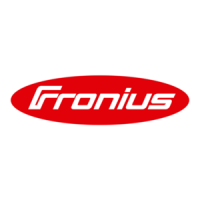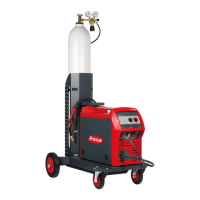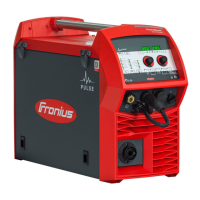Welding processes, procedures and welding char-
acteristics for MIG/MAG welding
General Power sources offer a selection of welding processes, procedures and welding
characteristics that enable a wide range of materials to be processed in the most
effective way.
Welding charac-
teristics
When selecting the filler metal, various process-optimised welding character-
istics are available depending on the welding process and shielding gas combin-
ation.
The supplementary label for the welding process provides information about
certain properties and the use of the welding characteristic:
Special welding characteristic properties:
Steel Characteristics for conventional welding tasks
Steel root Characteristics for root passes with powerful arc
Steel dynamic Characteristics for high welding speeds with concentrated
arc
Summary of
MIG/MAG
standard syner-
gic welding
MIG/MAG standard synergic
The MIG/MAG standard synergic welding process is a MIG/MAG welding process
across the entire power range of the power source with the following arc types:
Dip transfer arc
Droplet transfer takes place during a short circuit in the lower power range.
Intermediate arc
The droplet increases in size on the end of the wire electrode and is transferred
in the mid-power range during the short circuit.
Spray arc
A short circuit-free transfer of material in the high power range.
Short descrip-
tion of arc air
gouging
During arc air gouging, an arc is ignited between a carbon electrode and the
workpiece, and the base material is melted and cleaned with compressed air.
The operating parameters for arc air gouging are defined in a special character-
istic.
Applications:
-
Removing shrink holes, pores, or slag inclusions from workpieces
-
Detaching sprue or finishing entire workpiece surfaces in casting operations
-
Edge preparation for heavy plates
-
Preparation and repair of weld seams
-
Working out root passes or defects
-
Production of air gaps
23
EN

